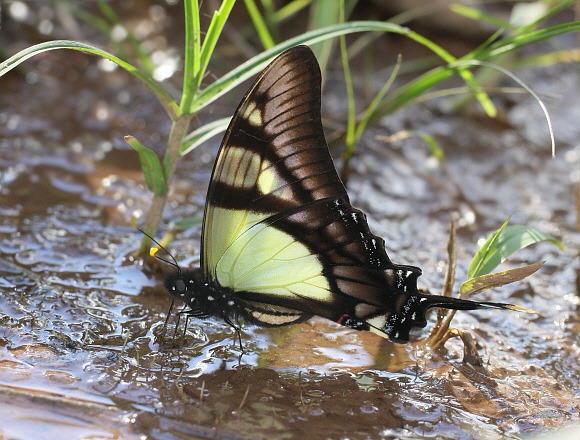
Introduction
The genus Eurytides is comprised of 7 neotropical species. They are closely allied to Protesilaus and Protographium, the three genera being known collectively as Swordtails, due to the long narrow projections on their hindwings.
This species is found in Venezuela, Brazil, Ecuador, Peru and Bolivia.
Habitats
Eurytides serville is found in association with primary rainforest at altitudes from sea level to about 800m, in the foothills of the eastern Andes, and the lowlands of the upper Amazonian region.
Lifecycle
I have no information regarding this particular species, but the following descriptions apply generally to the genus Eurytides :
The eggs are typically white, globular, and laid singly on the young leaves of Guatteria, Annona or Sapranthus ( Annonaceae ). Females tend to repeatedly visit a chosen plant, upon which they may lay several eggs during the course of a few hours.
The larvae are wedge-shaped, tapering towards the tail end, and with the thoracic segments enlarged. They are generally greenish, marbled or spotted with darker markings, and are not adorned with spines or tubercles. They normally rest with the head and tail slightly raised.
As with all other Papilionids the larvae are equipped with an eversible osmaterium – a pair of fleshy forks on the first segment, from which airborne chemical compounds are disseminated. Various theories have been postulated as to the purpose of these pungent odours, which appear to have no effect on avian predators or dipteran parasitoids. It has been suggested that they may serve to warn off ants that might otherwise molest them.
The pupae are usually brownish, with a prominent thoracic keel, and resemble small pieces of dirty wood. They are always fixed vertically by the cremaster and a silken girdle to twigs.
Adult behaviour
This species is normally encountered as solitary males, which descend from the canopy to imbibe mineralised moisture from the edge of puddles or ditches. When feeding the butterflies are usually quite oblivious of human intruders – the specimen in the photograph above received about 20 mins of close attention from a group of 4 photographers, but showed no signs of the nervousness that is commonly found with other Swordtail species.
